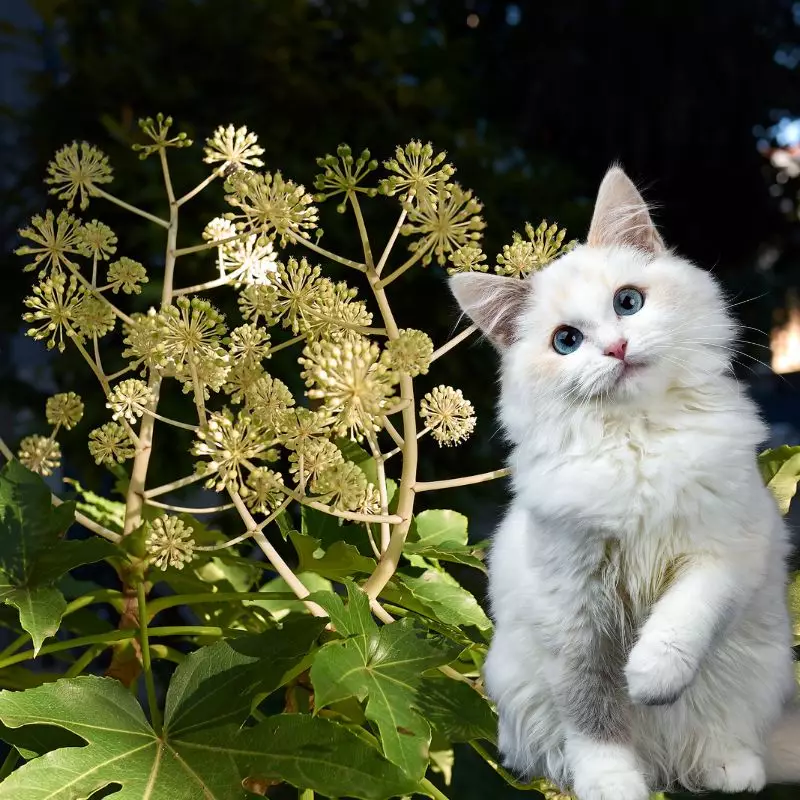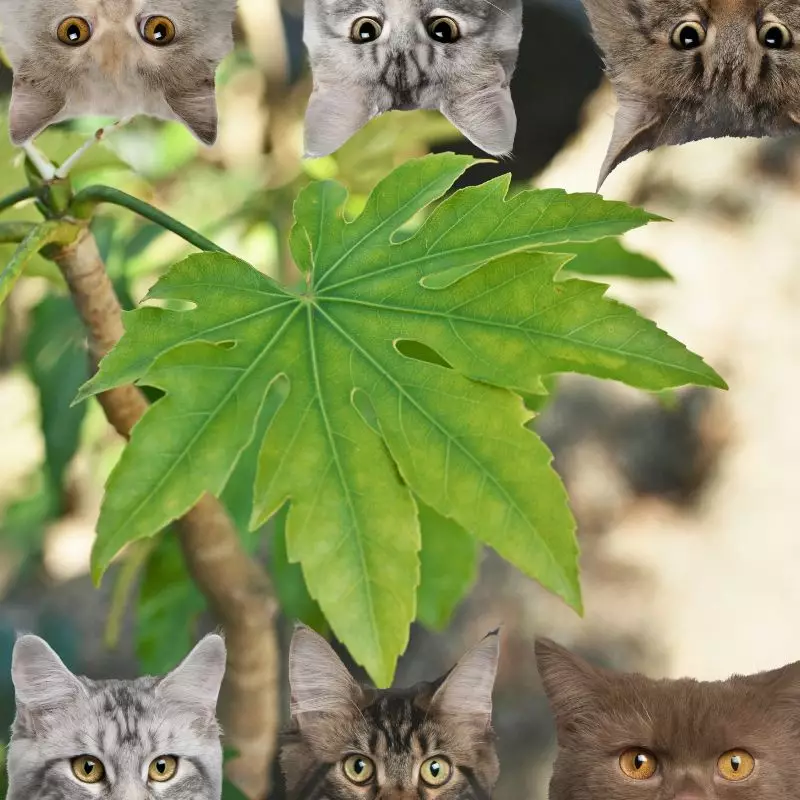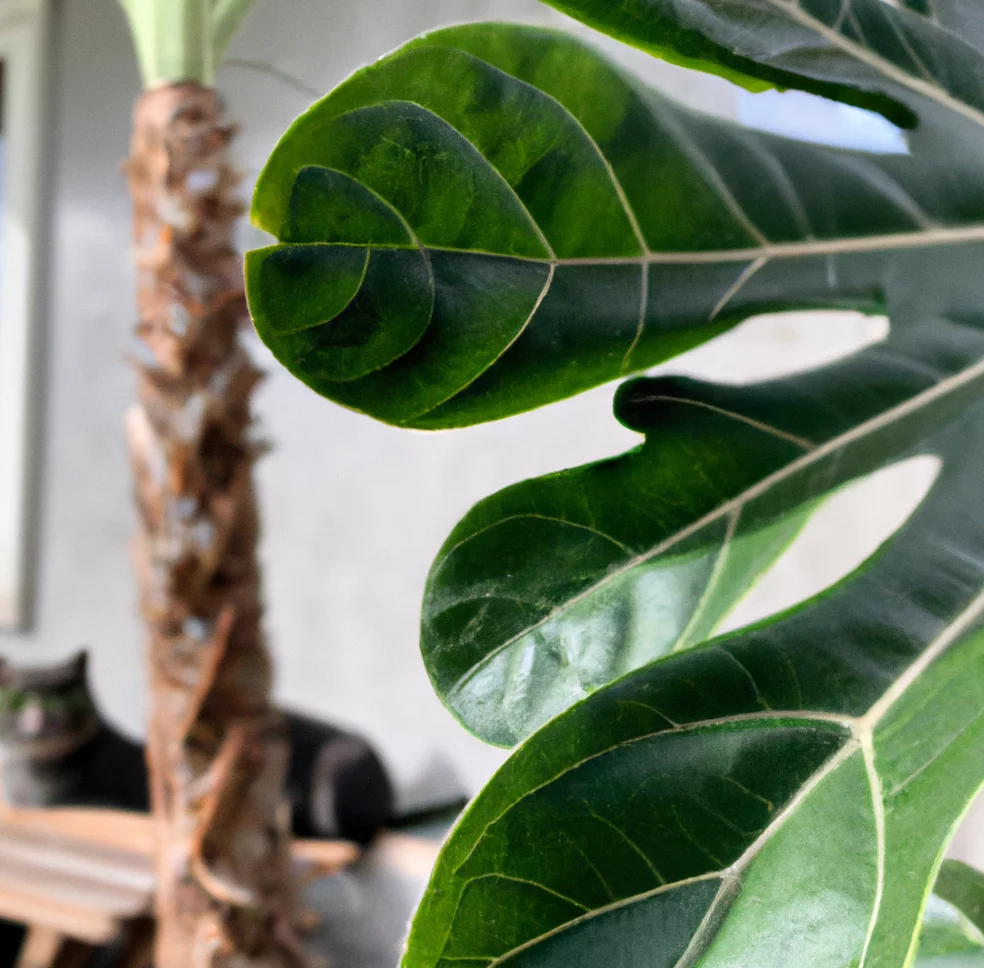No, Figleaf Palm is not toxic to cats.
This conclusion comes from our comprehensive research and collaboration with a team of experienced DVMs (doctors of veterinary medicine). Thanks to their invaluable input, we can provide readers with accurate and up-to-date information on the potential risks associated with various plants, particularly the Figleaf Palm in this instance. Our findings are further supported by high-authority websites such as ASPCA and PetMD.
It’s worth noting that the Figleaf Palm, also commonly known as Japanese aralia, is included in the ASPCA’s list of plants safe for cats. Apart from its non-toxicity to felines, this striking shrub thrives in partial to full shade and can be kept as an indoor cat-safe plant.
Can Cats Eat Figleaf Palm?

Even though your cat won’t be poisoned by eating cat-safe plants like figleaf palm, it’s never a good idea to let a pet dine at will. A stray leaf or splintered twig could easily lodge in the kitty’s throat or intestines. Figleaf palm is harmless to nibbling cats, dogs, and people unless sprayed with deadly bug, disease, or weed-controlling chemicals.
What is Figleaf Palm?

Figleaf palm (Fatsia japonica), commonly known as glossy-leaf paper plant, fatsi, paper plant, false castor oil plant, or Japanese aralia, is a flowering plant in the Araliaceae family that is endemic to southern Japan and Korea. It is an evergreen shrub with strong, sparingly branching stems that grows to a height of 1–5 meters. The leaves are spirally arranged, huge (20–40 cm wide) and on a petiole up to 50 cm long, leathery, palmately lobed, with 7–9 broad lobes separated half or two-thirds of the way to the leaf’s base; the lobes are bordered with coarse, blunt teeth. The flowers are small and white, and they bloom in late autumn or early winter in dense terminal compound umbels, followed by small black fruit in the spring.
It is usually cultivated as ornamental in warm temperate climates. Figleaf palm grows in semi-shade to full shade and is cold and hardy. It has been demonstrated to successfully remove gaseous formaldehyde from the indoor air when cultivated as an indoor plant.
Keeping Cats Away From Figleaf Palm

If you can’t keep your plant out of reach of your cat, make it less enticing. Spray your cat’s favorite plants with water and then sprinkle them with cayenne pepper as a deterrent. Citrus flavors are repulsive to cats, so dilute some orange, lime, or lemon juice with water and spritz chewable plants with the mixture. Consider getting your cat her own plant. A beautiful pot of cat grass, such as a blend of wheat, rye, and barley, distracts her from her unwanted nibbling. You can buy cat grass commercially or try growing it yourself.
Plants to Avoid For Your Cats
If you are a cat owner and unsure if the plants growing in your yard are harmful to your cats, check out this list of toxic plants for cats. You can also check our list of non-toxic plants for cats.





